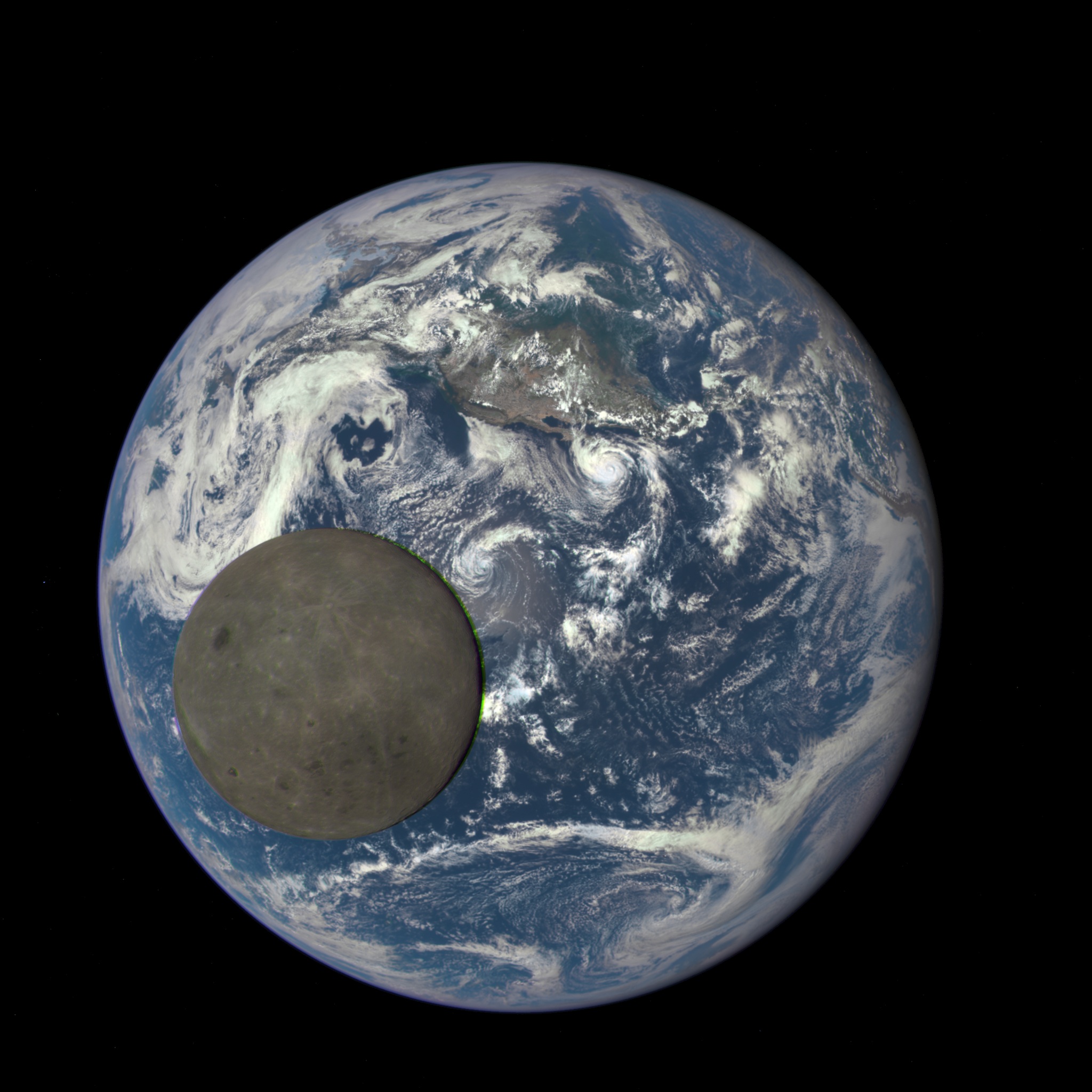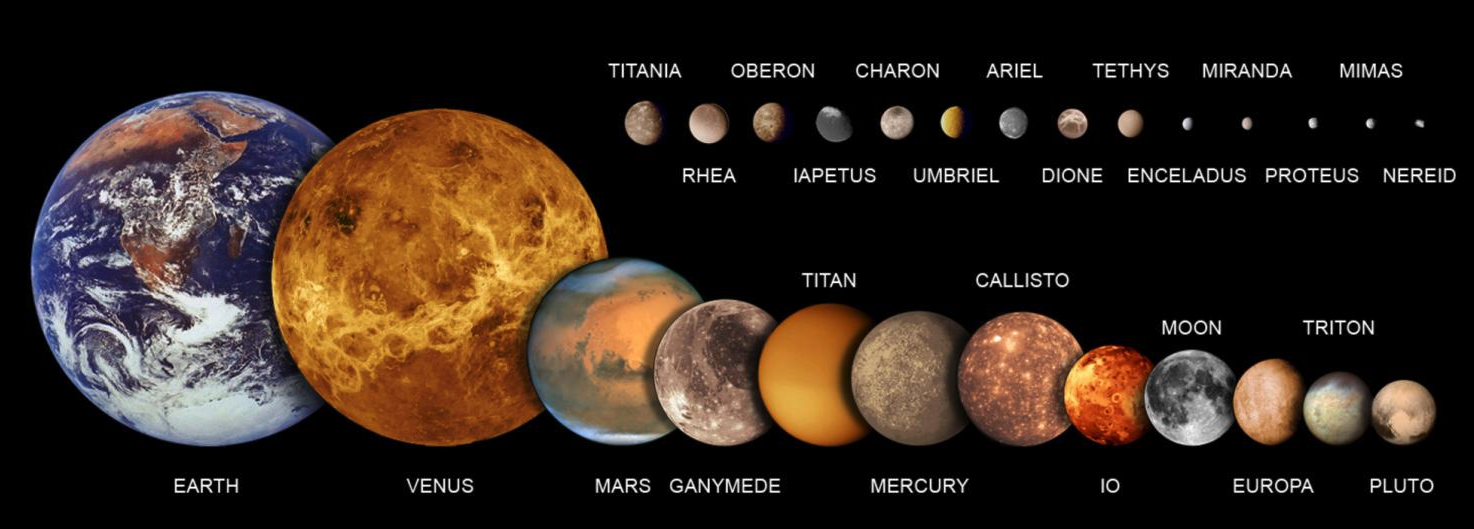It looks like you're using an Ad Blocker.
Please white-list or disable AboveTopSecret.com in your ad-blocking tool.
Thank you.
Some features of ATS will be disabled while you continue to use an ad-blocker.
share:
Apologies if already posted Ive never seen this, its pretty cool if true. Surely the view if the Klingons or the Empire popped out of hyperspace
From a Million Miles Away, a Camera Aboard NASA's DISCOVR Spacecraft Shows the Moon Crossing the Face of the Earth

From a Million Miles Away, a Camera Aboard NASA's DISCOVR Spacecraft Shows the Moon Crossing the Face of the Earth

originally posted by: putnam6
Apologies if already posted Ive never seen this, its pretty cool if true. Surely the view if the Klingons or the Empire popped out of hyperspace
From a Million Miles Away, a Camera Aboard NASA's DISCOVR Spacecraft Shows the Moon Crossing the Face of the Earth
This is the fakest most superimposed looking photo NASA has released yet. Makes the Moon landing look like the latest movie of the marvel franchise! What a joke! They will never show a true shot of Earth due to the fact there is too many spaceships (yes like star-trek/ starwars) to hide and scrub! Look how the close ups of the moon from NASA look like our Google Earth photos of the places we aren't supposed to see like area 51 for example.
Would have been a cool post had NASA actually been created to explore and not hide... What shameful time to be alive.
Also a party pooper here. Looks fake like nasa does best. I don't believe anything they put out now. That last composite image of the moon did it for
me. Why they'd need to do composite images when consumer cameras/telscopes do a decent job yet nasa gets millions a year in funding.
Nope.
Nope.
originally posted by: Oldcarpy2
a reply to: HUBE007
Blimey.
Bonkers!
Dammit HUBE, you made me agree with Oldcarpy, but they are likely spot on here. So I got to ask

Seriously, I agree it looks so much like CGI, but does that make it CGI? So got to ask what did they launch into space
7 seven ago or was that CGI and fake then too? Even if you believe the moon missions were hoaxed does that mean every NASA mission was hoaxed and CGI?
Let's not forget we got other countries taking pics of the moon are they in on this VAST SCIENTIFIC CONSPIRACY?
in other words, I'm willing to listen to how this is fake, why they would fake it, and how they convince the hundreds if not thousands of employees, sub-contractors, etc. to go along with faking this.
No satellites, no space station, no space junk? And the moon looks like it has a cross seam on it. Fishy.
www.nesdis.noaa.gov...
Ranging from the size of a small school bus down to the size of your lunchbox, satellites of all shapes and sizes are used to monitor Earth from space.
NOAA’s satellite fleet is made up of a variety of spacecraft, from the 3,238kg GOES-15 satellite to the 570kg DSCOVR satellite.
Do you really expect to see a satellite from a million miles away? on top of a cross seam LOL so they are gonna fake it and it would have a cross seam left. Pretty sure that has to do with the illumination from the sun and below here is a reasonable explanation about long-distance space photography that no doubt lots of us have absolutely no clue about.
www.reddit.com...
Good explanation for that below too
What’s the green ring following the curve on the right half of the moon?
I have no idea if photo is real or fake
The camera takes pictures by placing a color filter in front of the light sensor, only allowing a narrow range of frequencies through. To take what we would consider a full-color picture like this, it has to take (Al least) three separate images for each of the three color channels: one through a red filter, one through a green one, and one through a blue filter which are then stacked to make the color image.
Normally this isn’t an issue because it is designed to image the watch and the amount of time it takes to change the filters is very short compared to how long it takes stuff to change on earth. But from DSCOVR’s vantage point, the moon passes by the earth very quickly by comparison, so the moon was in a slightly different position in each color channel image, leading to a slight chromatic aberration-like effect for the moon.
Note that this isn’t too different from how almost all other digital cameras work, they just usually use a grid of different color filters so you can take a full-color image all at once. This allows for quicker images (as usually we don’t have the time or the stability to change filters to get images of stuff in our daily lives), but at the expense of resolution (either/or spatial or color-space resolution, since multiple sensor pixels must be used to create one image pixel) and the moveable filters allow the space camera to take images in many more individual colors, which is very useful for research (e.g., it can take an image through a very specific green filter that is the wrong green for making “true” color images, but allows a very narrow band of colors through that are reflected by chlorophyll, allowing measurements of plant activity).
edit on 26-10-2022 by putnam6 because: additional links
ah crap the dam Japanese are faking moon images too, the whole world is lying to us
Here's Russia those lying commie bastards they are in on it too. Guess all those static images are fake too
lastly here is DSCVR gallery of photos including daily images, if they are faking they are really taking it to the nth degree
epic.gsfc.nasa.gov...
Here's Russia those lying commie bastards they are in on it too. Guess all those static images are fake too
lastly here is DSCVR gallery of photos including daily images, if they are faking they are really taking it to the nth degree
epic.gsfc.nasa.gov...
edit on 26-10-2022 by putnam6 because: (no reason given)
a reply to: putnam6
I think the moon is too small in the picture. The camera is 1 million miles away from the earth, the moon is 282,000 miles on average away from the earth in an almost circular orbit. 1 million minus 282,000 is 718,000 miles that the moon is from the satellite's camera. I believe the moon should be a little bigger in the picture. The moon is 1,079 miles approximately in diameter and the earth is approximately 7,926 miles, and the moon is 282,000 miles approximately from the earth which I think should make the moon's image a little bigger in the picture than it is.
Kind of like when the moon eclipses the sun, it almost fills the sun's diameter. I know there's a lot of difference between 8 million miles and 718,000 miles, but I still think they got it wrong.
ETA: Maybe it is the right size because the moon is 1/4th the size of the earth's diameter. The picture posted looks like the moon is only about a third of the diameter of the earth... Hard to tell...
I think the moon is too small in the picture. The camera is 1 million miles away from the earth, the moon is 282,000 miles on average away from the earth in an almost circular orbit. 1 million minus 282,000 is 718,000 miles that the moon is from the satellite's camera. I believe the moon should be a little bigger in the picture. The moon is 1,079 miles approximately in diameter and the earth is approximately 7,926 miles, and the moon is 282,000 miles approximately from the earth which I think should make the moon's image a little bigger in the picture than it is.
Kind of like when the moon eclipses the sun, it almost fills the sun's diameter. I know there's a lot of difference between 8 million miles and 718,000 miles, but I still think they got it wrong.
ETA: Maybe it is the right size because the moon is 1/4th the size of the earth's diameter. The picture posted looks like the moon is only about a third of the diameter of the earth... Hard to tell...
edit on 10/26/2022 by NightFlight because: Left out some important
originally posted by: Oldcarpy2
a reply to: putnam6
Apologies.
Normal service will be resumed shortly.
We ain't gonna agree on everything, but who does LOL I disagree with family and friends all the time.
Besides, Ive found myself agreeing with you a bit more lately. Definitely thinking of seeing a therapist, shock treatment, or as a last resort the Joseph P Kennedy special.
originally posted by: NightFlight
a reply to: putnam6
I think the moon is too small in the picture. The camera is 1 million miles away from the earth, the moon is 282,000 miles on average away from the earth in an almost circular orbit. 1 million minus 282,000 is 718,000 miles that the moon is from the satellite's camera. I believe the moon should be a little bigger in the picture. The moon is 1,079 miles approximately in diameter and the earth is approximately 7,926 miles, and the moon is 282,000 miles approximately from the earth which I think should make the moon's image a little bigger in the picture than it is.
Kind of like when the moon eclipses the sun, it almost fills the sun's diameter. I know there's a lot of difference between 8 million miles and 718,000 miles, but I still think they got it wrong.
ETA: Maybe it is the right size because the moon is 1/4th the size of the earth's diameter. The picture posted looks like the moon is only about a third of the diameter of the earth... Hard to tell...
I guess where I'm coming from is we have these images from NASA no other scientists or experts seem to doubt them, Id loved to prove NASA is faking something but it's gonna take more than HUBE said so on a conspiracy website.
Again why fake this capability at all? is it just to get more funding for thier department or program? it damn sure isn't to stick to the Russkies like the alleged moon fakery was supposedly for. So why lie?
Here's a better link, showing the lunar transit gallery of images
epic.gsfc.nasa.gov...
And I believe this is the rocky planetary bodies to scale the moon and earth included

edit on 26-10-2022 by putnam6 because: (no reason given)
new topics
-
Almost Home
Short Stories: 2 hours ago -
Kamala finally builds a wall...around her home in DC
Jokes, Puns, & Pranks: 3 hours ago -
Ok Melbourne, Really?
Music: 4 hours ago -
Predictions for the result
2024 Elections: 8 hours ago
top topics
-
Predictions for the result
2024 Elections: 8 hours ago, 11 flags -
Kamala finally builds a wall...around her home in DC
Jokes, Puns, & Pranks: 3 hours ago, 6 flags -
Almost Home
Short Stories: 2 hours ago, 6 flags -
Ok Melbourne, Really?
Music: 4 hours ago, 1 flags
active topics
-
Predictions for the result
2024 Elections • 85 • : TzarChasm -
KAMALA HARRIS and Democrats - Acts of Desperation with less than 25 days till Nov 5th 2024.
2024 Elections • 120 • : Vermilion -
-@TH3WH17ERABB17- -Q- ---TIME TO SHOW THE WORLD--- -Part- --44--
Dissecting Disinformation • 3102 • : McTech2 -
Almost Home
Short Stories • 2 • : JJproductions -
The Fight for Election Integrity Continues -- Audits, Criminal Investigations, Legislative Reform
2024 Elections • 4346 • : Vermilion -
Kamala finally builds a wall...around her home in DC
Jokes, Puns, & Pranks • 4 • : Hypntick -
Betting markets have Trump by a good bit
2024 Elections • 182 • : WeMustCare -
British Man Jailed for over 2 Years for Shouting at Police During Protest has Died in Prison
Social Issues and Civil Unrest • 29 • : gortex -
Trump thinks Liz Cheaney should be shot in the face?
US Political Madness • 106 • : YourFaceAgain -
Fraudulent Pennsylvania Voter Registrations Traced to Democat-linked Company: District Attorney
2024 Elections • 46 • : YourFaceAgain
